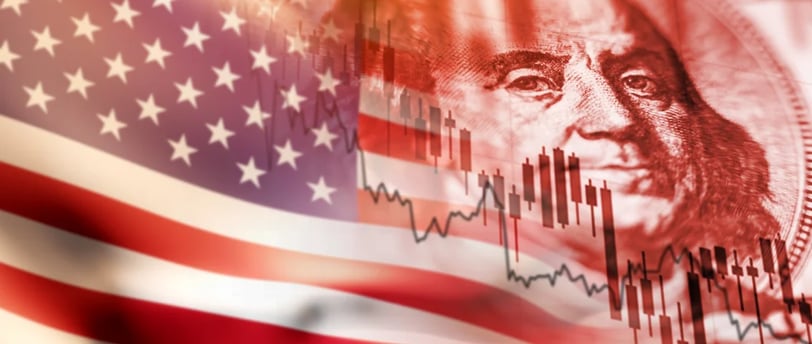
Navigating markets with precision
The Looming Recession: A Deep Dive into the US Economy
8/26/20242 min read


Introduction
The United States economy, once a beacon of stability, is now facing mounting pressures that could lead to a recession.While experts differ on the timing and severity of a potential downturn, the signs are increasingly pointing towards a challenging economic landscape. This article will delve into the key indicators and factors that are contributing to the growing recessionary fears.
Key Indicators of a Potential Recession
Inverted Yield Curve: One of the most reliable predictors of a recession is an inverted yield curve, where short-term interest rates exceed long-term rates. This indicates that investors are anticipating a slowdown in economic growth and are seeking safer investments.
Rising Inflation: Persistent high inflation, coupled with rising interest rates, can put a strain on consumers and businesses, leading to reduced spending and economic contraction.
Tightening Monetary Policy: The Federal Reserve has been aggressively raising interest rates to combat inflation,which can slow down economic activity and increase the risk of a recession.
Supply Chain Disruptions: Ongoing supply chain disruptions, exacerbated by geopolitical tensions and the pandemic, have contributed to rising prices and constrained economic growth.
Geopolitical Uncertainty: Global events such as the war in Ukraine and trade tensions between the US and China can create economic uncertainty and dampen investor sentiment.
Factors Contributing to Recessionary Fears
Consumer Confidence: Declining consumer confidence can lead to reduced spending, which is a major driver of economic growth.
Corporate Earnings: If corporate earnings begin to decline, it can signal a weakening economy and increase the likelihood of a recession.
Housing Market: A softening housing market can have a significant impact on the overall economy, as it affects consumer wealth, spending, and borrowing.
Labor Market: A weakening labor market, characterized by rising unemployment and declining job growth, can also contribute to a recession.
Conclusion
While the US economy has shown resilience in the past, the current economic landscape is fraught with challenges. The combination of high inflation, rising interest rates, and geopolitical uncertainty has increased the risk of a recession. While it is impossible to predict the exact timing or severity of a downturn, it is essential to remain informed and prepared for potential economic headwinds.
Insights
Stay informed with expert insights and analyses on finance.
Email:Financetrekker@gmail.com
Tips
Global marketium
Markets
© 2024. All rights reserved.
